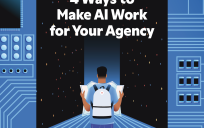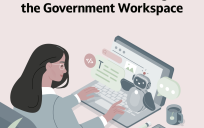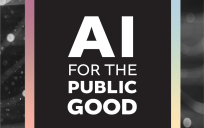One of the most important decisions agencies make is whom they choose to hire. The public servants who deliver services, maintain operations and respond to crises are the cornerstones of government. But finding and hiring them can be tough.
Agencies are wrestling with multiple recruiting challenges, whether it’s inefficient processes, a large retirement-ready workforce, the “great resignation,” or the imperative to create an equitable and inclusive workplace. And these are just a few.
The benefits of purpose-built artificial intelligence (AI) to help tackle these challenges, then, are too good to turn down. Dan Hopkins, Vice President of Applied AI and Public Sector at Eightfold, which offers a deep-learning talent platform, shared how AI can help your agency’s hiring processes.
Timing and relevance
In federal hiring today, it can take 100 days or more to fill empty positions. And that’s assuming you have a job description ready to be posted. If you don’t, it adds even more time to the process.
“Many federal hiring managers are competing with private sector companies for qualified candidates, and you must be able to move quickly if you want to secure top talent,” Hopkins said.
Leveraging data and AI can provide more clarity and improved articulation of what’s needed within the agency, therefore reducing the time spent posting an open job position and increasing relevancy for applicants.
Vaguely worded job descriptions that don’t accurately reflect a role lead job seekers to self-assess and, oftentimes, get it wrong when they apply. Thus, agencies end up receiving hundreds of applicants per job, but they’re not always relevant. Using AI and data matches jobseekers to the right positions, and it helps hiring managers better assess candidates according to the direct skills needs they have within their agencies.
Addressing Bias
Ethical AI can help quell human bias from the hiring process, however not all AI technologies are created equal. Agencies must ensure that their solutions are built on principles of fairness, accuracy and robustness.
First, AI can guard against the unconscious bias of a human in the loop. When any person evaluates candidates, they can allow unconscious bias to affect their judgment, simply by looking at an applicant’s name or by preferring certain universities, degrees, or prior experiences, for instance. Profile masking can obfuscate and anonymize applicant profiles to highlight only the qualities that are relevant to the position. “It can help enable candidate selection based on the merits of the candidate alone,” Hopkins said.
Second, AI can provide a tremendous wealth of insight into how an agency’s hiring process is performing in diversity, equity, inclusion and accessibility. For example, AI can demonstrate the differences between genders at every stage in the recruiting cycle. And then, it can help inform solutions and process corrections.
“That data and insight across the hiring life cycle is invaluable for continued optimization and moving the needle on diversity, equity and inclusion,” Hopkins said. “This is a real opportunity for embracing artificial intelligence.”
This article is an excerpt from GovLoop’s guide “Your Field Notes for Data-Driven Decision-Making in Government: Case Studies on Work Culture, Equity and More.”






Leave a Reply
You must be logged in to post a comment.